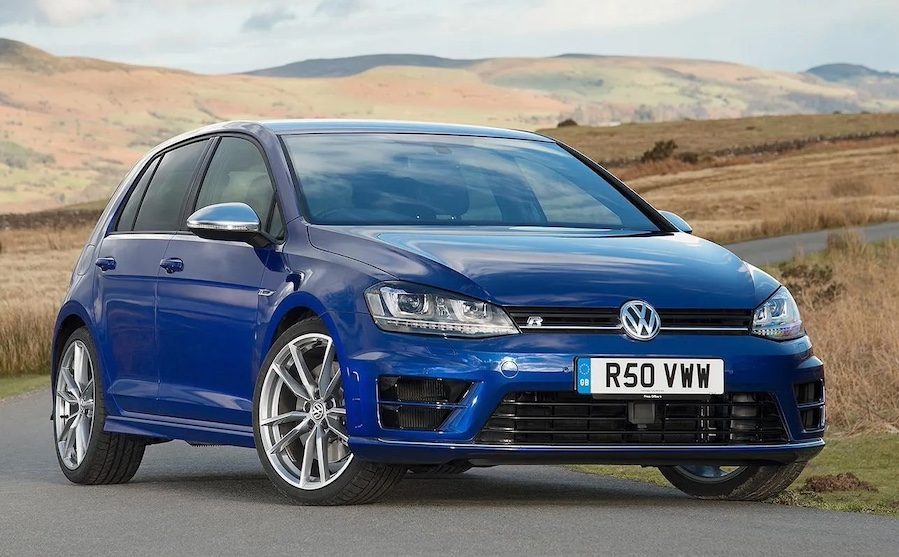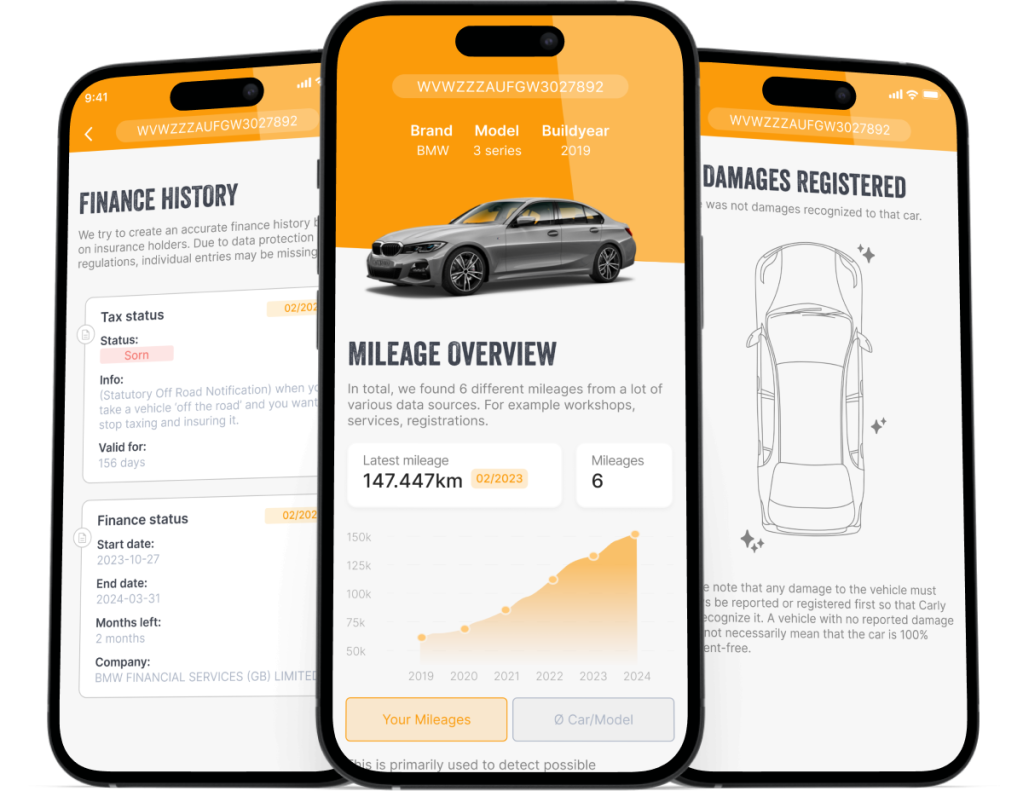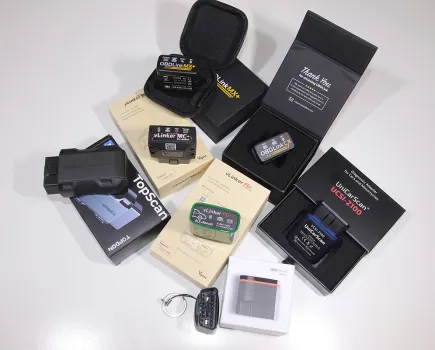It had 300hp out of the box, all-wheel-drive and bullet-proof build quality. The VW Golf R Mk7 is arguably the ultimate all-round Hot Hatch for under £15k! Our comprehensive buying guide should help you find the right one.
Volkswagen created the original Hot Hatch way back in 1976 with its game-changing Mk1 Golf GTI. Since then, it hasn’t all been plain sailing for Wolfsburg in its bid to retain top Hot Hatch honours. Despite something of a rollercoaster ride throughout the various Golf generations, things got back on track with the Mk5 GTI. Thankfully, when the Mk7 Golf R arrived in 2014, the Golf was once again a serious contender for the Hot Hatch crown.
Introducing the Mk7 Golf R
With a 5.1secs dash to 62mph (4.9 for DSG), the Mk7 R was as quick as a 991-generation Porsche 911 Carrera! Just let that sink in for a second…It’s really no wonder the Mk7 Golf R was an instant hit. It was great value for money, built well and it went like a rocket ship. It was also arguably the last hot ‘analogue’ Golf to be produced. Remember, by the time the face-lifted Mk7.5 came along, there was a virtual cockpit and LED lighting added to mix.
To the delight of many diehard Hot Hatch fans, the Mk7 R was also still available in a three-door configuration. That being said, the family-friendly five-door version was actually far more popular.
The Mk7 Golf R appealed to many because it was frighteningly quick without really shouting about it. It was only really the R badges and quad tailpipes that gave the game away. This was quite the opposite to the GTI model – with it’s fancy bumpers, red calipers and lairy branding. You could call the R understated cool at its finest, so naturally it was hugely popular with the mature Hot Hatch fan. Those who still longed for that type of performance, but without the fuss. With fast cars being frowned upon these days, it is arguably the ultimate street sleeper.
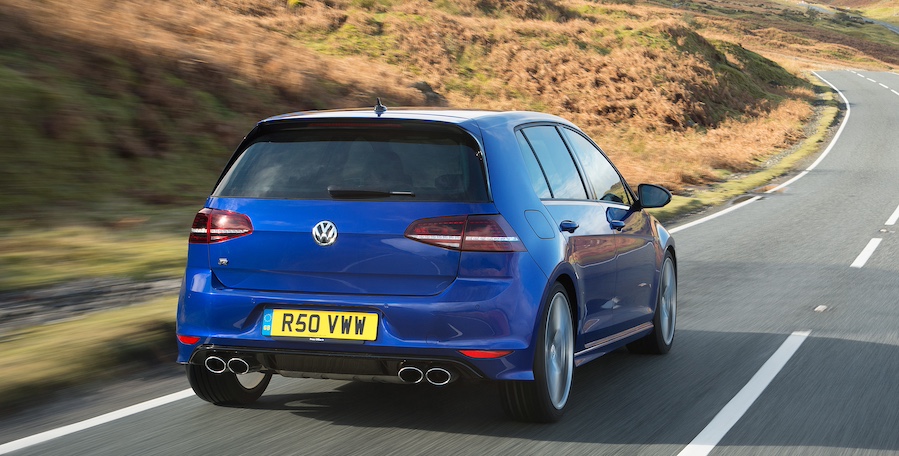
What’s the appeal of the VW Golf R Mk7?
With some cracking lease deals at the time of its launch in 2014, its no wonder the Golf R was so popular. At one stage, you could actually get into a Mk7 R for a little as £200 a month! At a whisker under £30k, the ‘R’ was only marginally more expensive that a 230hp Golf GTI Performance. However, it offered so much more with 300hp and all-wheel-drive.
Thanks to the 2.0-litre EA888 motor and Haldex all-wheel-drive, there wasn’t much that could keep up on an enthusiastic B-road blast! With 300hp and 280lb/ft the engine was a peach, regardless of whether you opted for the 6-speed manual or twin-clutch DSG transmission. Even today, a Mk7 Golf R will hold its own against most of the modern Hot Hatch contenders. And that’s before you take into account how easy you can extract power from a Mk7. If you’re interesting in that, check out our Mk7 Golf R tuning guide.
Many consider the Mk7 Golf R to be the definitive do-everything Hot Hatch of the time. However, if it wasn’t quite practical enough, then an Estate version arrived in 2015. The DSG-only ‘wagon’ soon earned the reputation of being the ultimate dog hauler!
VW Golf R Mk7 most common problems
- Excessive oil consumption – Issues with the car’s PCV could result in rear crank case seals to fail, but regular valve changes should stop this happening.
- Turbocharger failure – This was only really an issue with earlier cars. However, if a problem was going to arise, then chances are it will have already done so by the time you purchase one today!
- Haldex issues – This later DSG system was less prone to issues than earlier versions, however, regular servicing (every 40k) should ensure you don’t experience any harsh upshifts when cold.
- Worn cloth interiors – The majority of these cars came with light grey cloth interiors, which showed every mark and didn’t age well. We’d always suggest you try to find a leather-equipped car where possible.
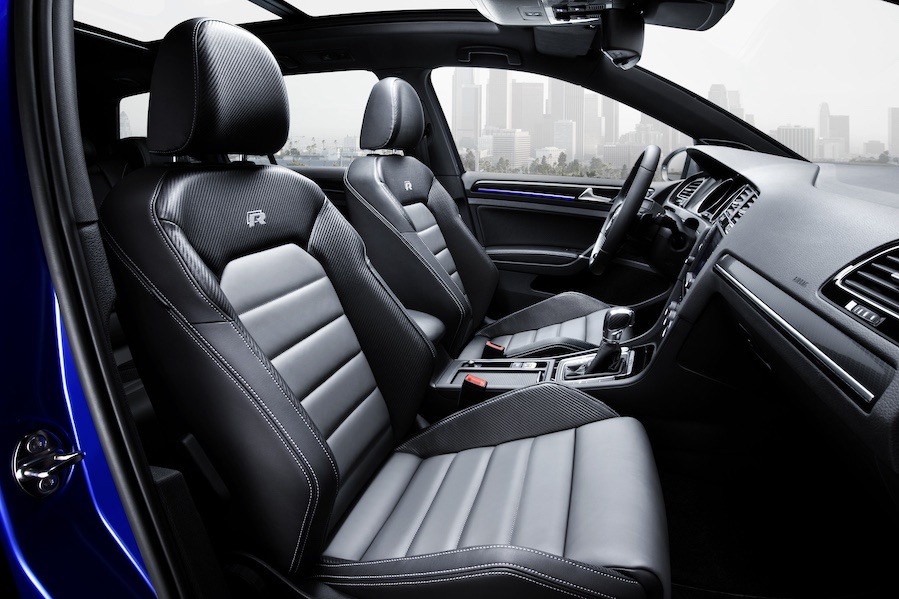
Leather may come at a premium, but we’d always select it over the common grey cloth stock option
VW Golf R Mk7 Pros
- Staggering performance from that sweet four-pot motor, but you need to keep on top of servicing to ensure its reliability.
- This car’s understated cool means its the ultimate street sleeper, which won’t attract the wrong types of attention from either the police or car thieves.
- With prices at an all-time low, there’s never been a better time to buy. You will struggle to find these types of bang per buck with any other vehicle, especially not with German build quality.
Cons
- Some of these cars (okay, quite a lot of them) will have had a hard life – especially the lease cars. Do your homework before buying one and if it looks tired then chances are it probably will be.
- Manual cars are arguably more fun, but enthusiastic launches can mean clutches go regularly, so do try and test drive before you buy.
- Lower spec cars can be a little bit dull, so try to look for a car with optional 19” wheels and full leather at the very least.
Areas to look out for when buying a VW Golf R Mk7
Below, we’ve broken the car down into its key components. We’ll highlight what you need to know, as well as any potential issues you may find.
Engine
After dabbling with heavy multi-valve six-cylinder engines in the Mk4 and Mk5 ‘R’ Golfs, VW switched to a lighter, four-cylinder turbo unit in the Mk6 R. The Mk7 Golf R featured a similar version of the 2.0-litre (1,984cc) in the Gen 3 EA888 16v engine, but it had a timing chain rather than belt. The good thing about this, is that there’s no set lifespan for these chains and it’s common to get at least 100k-miles out of them. In fact, it’s actually the chain tensioner that is more likely to fail. If the chain does fall out of the adjustment window, then a check engine light should come on to warn you.
Producing 300hp at 5500-6200rpm and 280lb/ft at 1800-5500rpm, it’s safe to say it’s pretty easy to keep these engines on song. And despite the car’s blistering performance, it would still deliver pretty respectable fuel efficiency, too. While VW’s claim of nearly 40mpg was possibly a little optimistic, the 7R could easily deliver high 20s to low 30mpgs. That’s still not bad given you could achieve these figures while still driving the car quickly.
Issues
It is common for modern direct-injection engines to be susceptible to carbon build-up. VW’s use of port injection in the Gen3 EA888 was probably intended to help eradicate this, though. There were some things to watch out for, though. You will probably have heard horror stories about some of these cars using half a litre of oil every thousand miles or so. While some of these tales might be scaremongering, it’s always worth dipping the oil before a road test. Heavy use of oil could be linked with the car’s PCV (Positive Crankcase Ventilation) hoses and valves left unattended. While only a five minute job to swap, if left then this can result in the rear main crankcase seal failing. Always check the service history with these cars, as its vital all fluids have been regularly changed.
Some early cars (pre-65-plate) did suffer turbocharger failures, but chances are that if they haven’t had issue by this stage, then they probably won’t. Obviously don’t hold us to that, though!
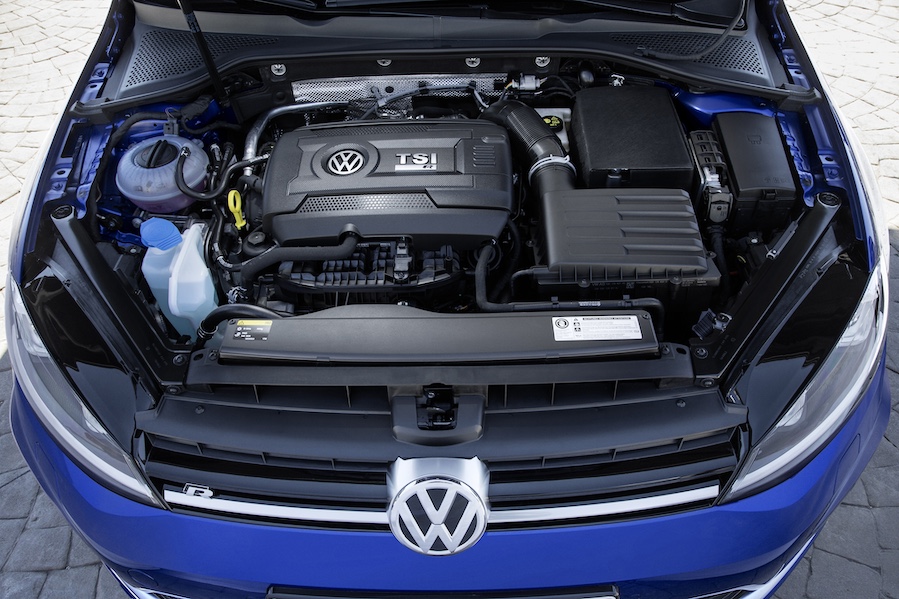
Transmission
The Mk7 Golf R was available with a six-speed manual gearbox as stock. There was the option to ‘upgrade’ to a six-speed twin-clutch DSG system (seven-speed from 2017 onwards), though. Quite which is best is really down to your own personal taste and driving style. While the DSG was quicker on paper, some claimed the manual was more involving and fun once you’d mastered it slightly narrow gate. Both weren’t without their downsides, though. Manuals could tend to eat clutches, especially on tuned cars or those that had been driven and launched enthusiastically. Likewise, DSG-equipped cars could soon develop harsh up-shifts from cold if not regularly serviced. While more expensive, the DSG option was also more popular, with allegedly two DSG-equipped cars sold for every manual.
Volkswagen’s Hadlex system is referred to as all-wheel-drive, however, predominately it only drives the front wheels until they lose traction. It’s only at this stage, that power is then also distributed to the rear wheels. While a pretty robust system, again, these need to be regularly serviced (every 30k or three years) to ensure a healthy lifespan. You can generally do this yourself in around half and hour using a bottle of G-060-1675-A2 oil.
It’s actually always worth checking the Hadlex system is working correctly, too, because they occasionally won’t be. It’s not always a faulty pump, either. Sometimes the pump can simply become disconnected or something as simple as a fuse in the control module can blow. Don’t always assume it’s worse case scenario until you’ve checked these areas first!
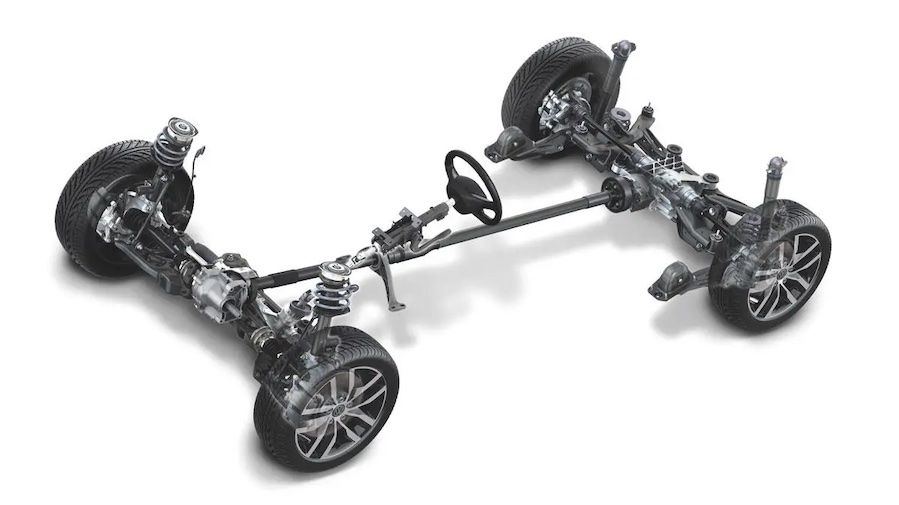
Chassis
The all-wheel-drive Golf R uses the same electrically-assisted progressive steering rack as the GTI. This is both accurate and light, even if not hugely quick or overflowing. If your car features VW’s Adaptive Chassis Control (or DDC – to save confusion with the Adaptive Cruise Control system), then you’ll be able to set damping, throttle mapping and steering weight via one of the three suspension modes – Comfort, Normal and Race. A standard-spec R will just offer Eco, Normal, Race and Individual modes. DDC will give you the best ride – as it constantly monitors and adjusts the ride to suit your own driving style and road conditions. However, its worth noting the DDC dampers can occasionally start to leak over time and are expensive to replace.
Wheels
While the Mk7 Golf R came on 18” alloys as standard, a 19” ‘Pretoria’ option was available which is a must in our mind. Not only do they give the car a more aggressive look, it also ensures you’ll get the most out of its amazing chassis. Just be warned, though, the lower profile 19” tyres does mean ride quality is slightly jeopardise and buckled or damaged wheels can also be common.
Due to the power and four-wheel-drive, naturally these cars do tend to get through tyres quite quickly and the 19” rubber isn’t exactly cheap, so it’s worth checking tread levels when you’re viewing a car. There might be room for negotiations on the price if it needs a set of boots.
Bodywork
As we’ve said, the Mk7’s body styling was extremely understated. If you want to get people’s attention then either opt for a GTI model instead… or a Honda Civic Type R! Build quality, as with most modern VWs, is pretty indestructible, although squeaky door rubbers are a common issue. This is nothing a bottle of seal lubricant can’t sort out, though.
Xenon headlights were standard equipment and all ‘R’ models. Not much else – other than the quad-tailpipes – let on that you were driving a top-of-the-range Golf model.
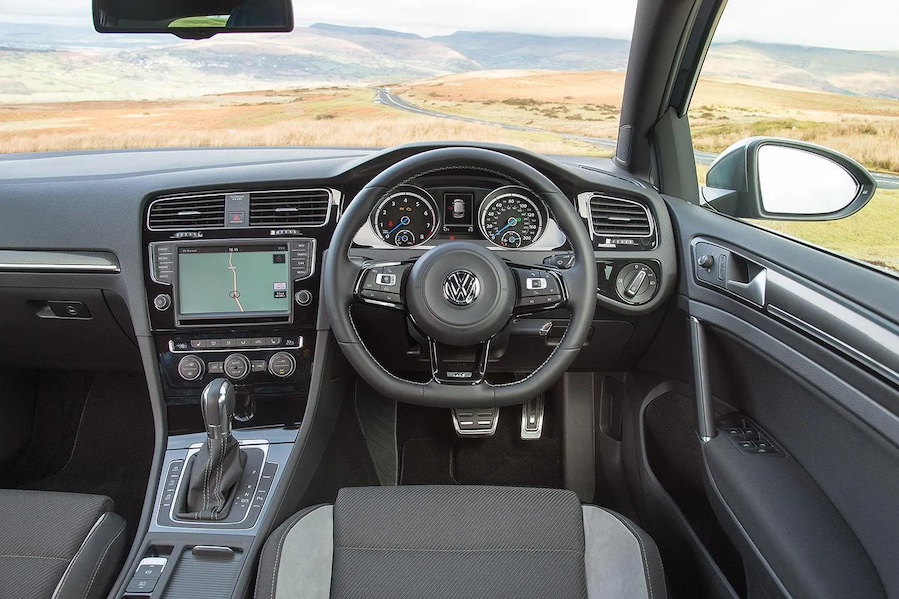
Interior
We’d always opt for full leather where possible. Light grey cloth interiors we both drab and easy to mark. Driver’s seats have been known to creak. Front windows can also misbehave when auto up/down is being operated. Generally, this can be resolved by simply holding the window closed for a couple of seconds in auto-up. Wait until you hear a slight click in the door and then release.
While slightly bland, the dashboard’s functionality is great and everything does feel extremely solid. The Mk7.5 got the new virtual cockpit, which some prefer, Many old-skool fans still prefer to earlier, analogue display, though. That’s the great thing about this car, there was quite a choice of spec’s to choose from.
Due to its all-wheel-drive system, the Golf R’s boot was 37 litres smaller than a two-wheel-drive car. Honestly, though, you’ll soon forgot about that after putting your foot down and throwing the car into a twisty set of bends. This car was very much built to be driven, which is the same ingredients that made the original Mk1 GTI so popular in the first place.
Buying the best Mk7 Golf R
When you’re on the lookout for a Mk7 Golf R, it’s easy to be dazzled by its blistering performance and sleek looks. But beneath the surface, there can be hidden issues that could cost you big. That’s where the Carly App and Carly code reader come in, offering peace of mind and ensuring you don’t get stung by hidden problems.
Carly’s OBD-II scanner is perfect for diving into the Golf R’s complex electronics. It can scan multiple control modules and ECUs to make sure the mileage checks out and detect any potential tampering. Modern cars like the Mk7 Golf store mileage across different systems, so even if the odometer looks legit, Carly can uncover if something’s been altered. Plus, with Carly’s free Car History Checker, you can dig up all the crucial details like previous damage, outstanding finance, or dodgy repairs, before you hand over any cash. It’s a game-changer when it comes to buying used performance cars.
To get the full lowdown on car fault codes, learn how to avoid mileage tampering, and see how Carly can help you unlock hidden car secrets, arm yourself with this essential tech before buying your next Golf R.
VW Golf R Mk7 model timeline
- 2013 – New Mk7 Golf R announced.
- 2014 – Car arrived in the UK in March 2014.
- 2015 – Mk7 Golf R Estate added to range in Summer 2015.
- 2016 – Production of Mk7 ends and Mk7.5 introduced.
- 2017 – Performance Pack added to range in November 2017.
- 2018 – Manual gearbox discontinued.
- 2020 – Production of Mk7.5 ends.
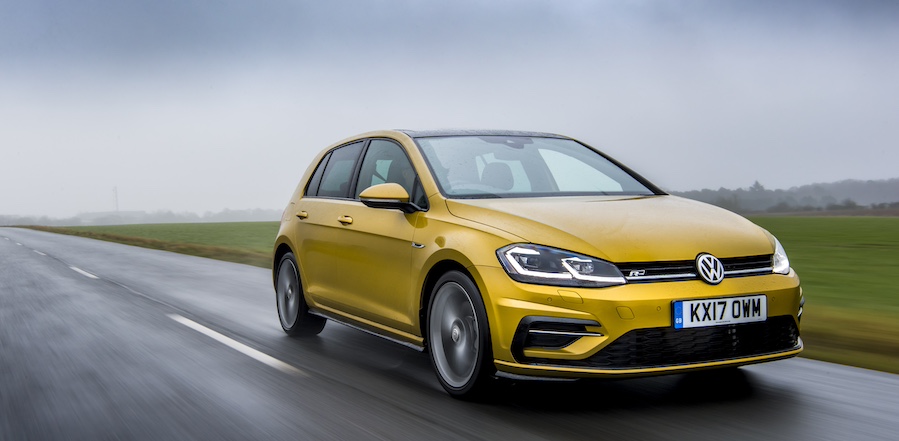
Face-lifted Mk7.5 arrived on UK roads in 2017. It featured new LED lighting and virtual cockpit
VW Golf R Mk7 Prices
- £7,000 – £10,000 – Early Cat S cars start as low as £7,000, and later 2016-17 cars with high-miles (over 100k) cost under £10,000
- £10,000 – £12,000 – Good condition Mk7s with average mileage, or lower mileage Cat N and Cat S cars fall into this category. Modded gems can be found here too, as the market prefers standard examples.
- £12,000 – £15,000 – The lowest mileage early Mk7s and nice condition Mk7.5s with higher spec and in better condition are abundent in this price bracket.
- £15,000+ – The latest 2019/20 cars with highr miles start at £15,000. Pay £18,000 to £19,000 and you’ll get a really tidy example with below average miles and comprehenisive history. Low mileage last of the Mk7.5s can fetch up to £25,000 still.
Read our Mk7 Golf R tuning guide next!

